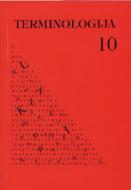Homonimai, homoformos ir homografai tekstynų lingvistikos požiūriu
Homonyms, homoforms and homographs from the viewpoint of corpus linguistics
Author(s): Erika RimkutėSubject(s): Language and Literature Studies
Published by: Lietuvių Kalbos Institutas
Keywords: lexical homonym; homoform; homograph; corpus; morphological ambiguity; morphological differences; relevant terminology
Summary/Abstract: The article deals with a small part of the corpus of the Lithuanian language, which was automatically tagged. The corpus with morphological tags has shown a high level degree of ambiguity of the language: about 47 percent of word forms are ambiguous. In the Lithuanian linguistics traditionally the greatest attention has been devoted to the lexical homonyms. Other levels of ambiguity have not been analysed. For this reason it was necessary to define the main terms of the morphological ambiguity and to solve the problematic issues of the relevant terminology. It was difficult to define what are the main differences between homographs, homonyms and homoforms. Traditionally in linguistics it is affirmed that homoforms must coincide phonetically, while homographs are pronounced differently. This article shows that some homoforms can differ by the place of accent, the quality of vowels or intonation. Homoforms were analysed instead of homographs or homonyms, because the main attention was devoted to morphological but not phonetic or semantic differences.
Journal: Terminologija
- Issue Year: 2003
- Issue No: 10
- Page Range: 33-41
- Page Count: 9
- Language: Lithuanian

